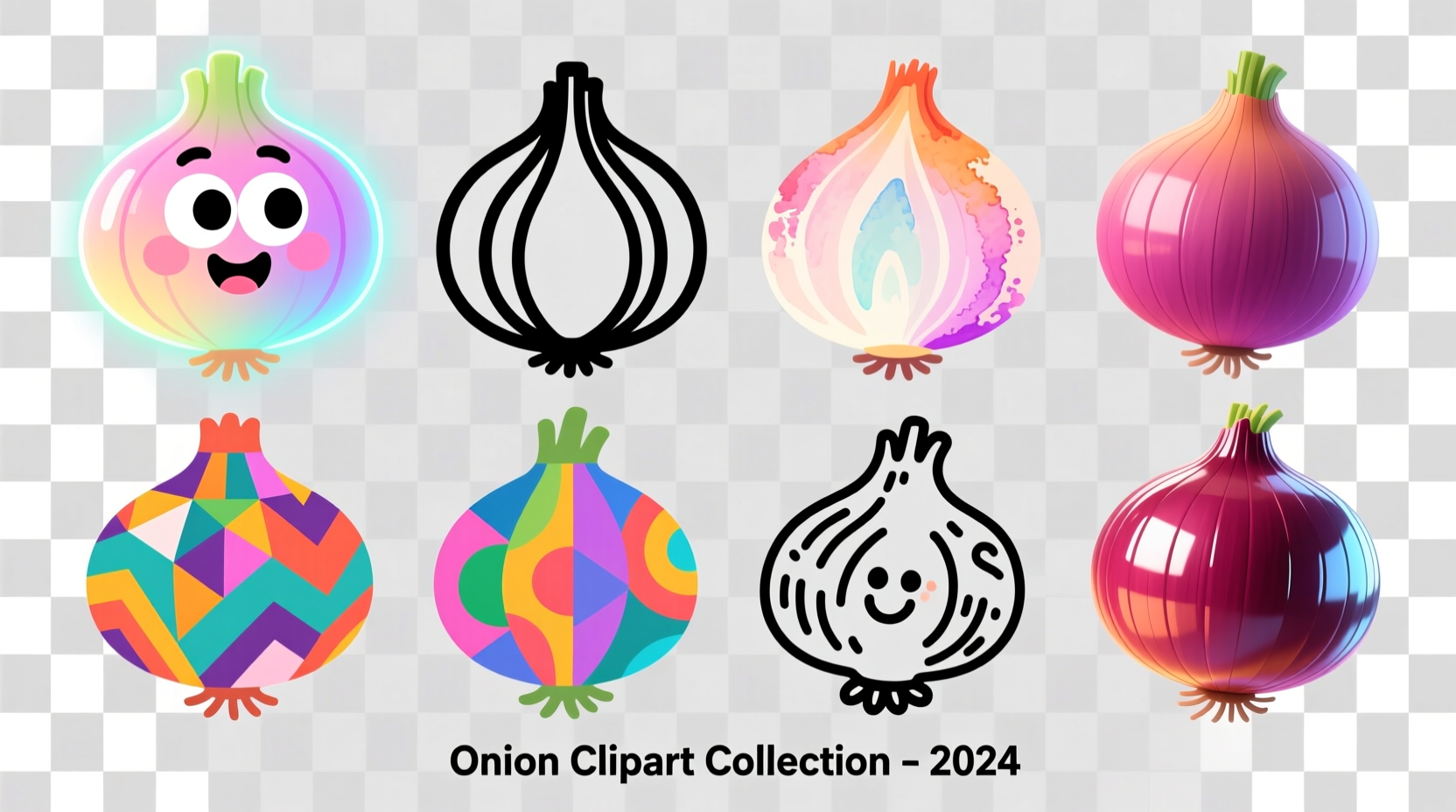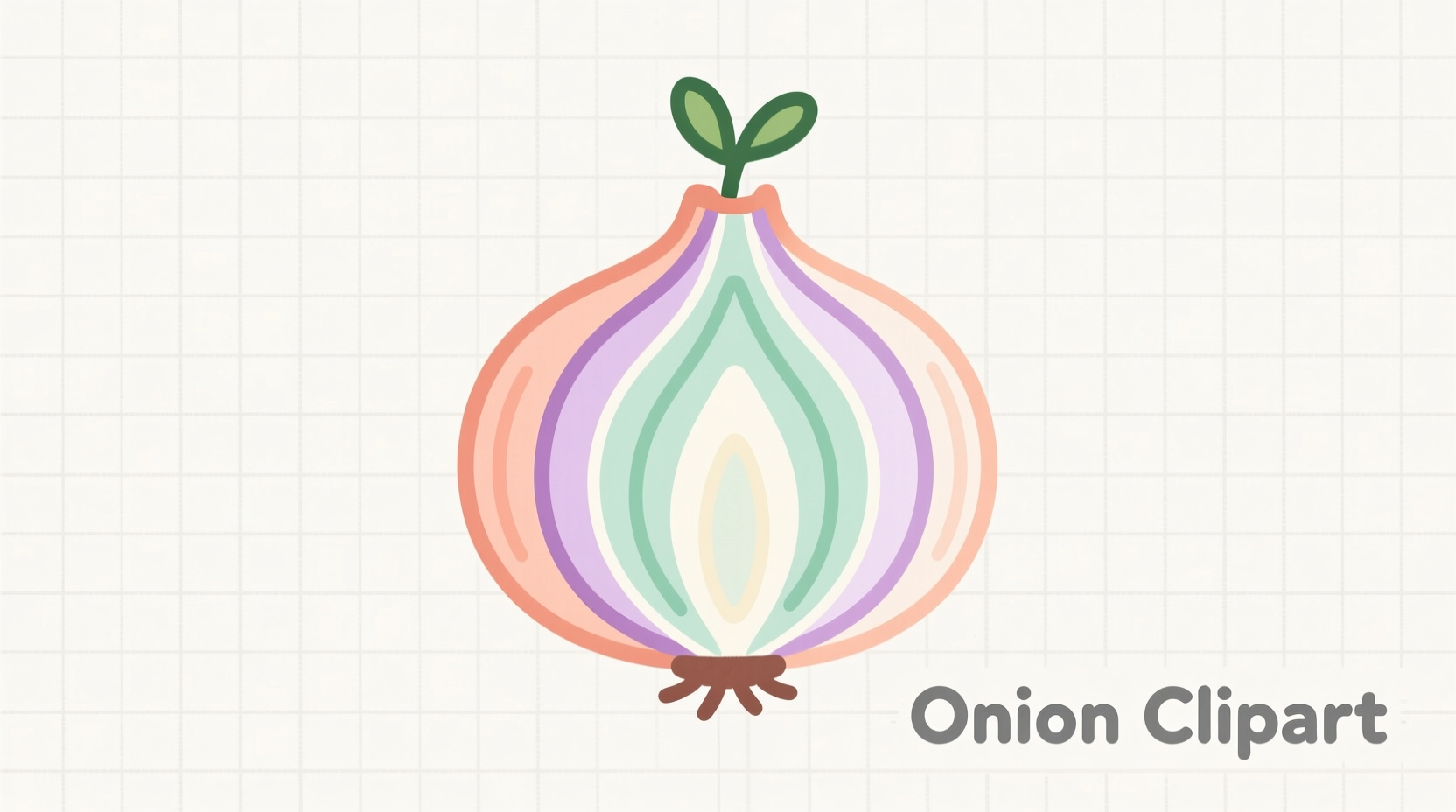Onion clipart serves as an essential visual resource for food bloggers, culinary educators, graphic designers, and recipe developers. Whether you're creating cooking tutorials, nutrition guides, or restaurant menus, having access to properly licensed onion illustrations can significantly enhance your visual content. This comprehensive guide explores the different styles, formats, and reliable sources for onion clipart while addressing critical copyright considerations.
Understanding Onion Clipart Styles and Formats
Not all onion graphics serve the same purpose. The style you choose should align with your project's visual requirements and technical needs. Professional designers typically work with three primary file formats, each with distinct advantages:
| File Format | Best For | Editing Flexibility | File Size |
|---|---|---|---|
| SVG | Web graphics, responsive design | High (vector-based) | Small |
| PNG | Social media, presentations | Medium (raster with transparency) | Medium |
| EPS | Print materials, professional design | High (vector-based) | Large |
Vector formats like SVG and EPS maintain quality at any size, making them ideal for projects requiring scalability. Raster formats like PNG work well for digital displays but lose quality when enlarged beyond their original dimensions. The U.S. Copyright Office confirms that clipart, like all visual works, receives automatic copyright protection upon creation, regardless of format (Copyright Office Circular 102).
Evolution of Food Clipart: A Brief Timeline
Understanding how clipart has evolved helps explain current quality standards and usage practices:
- 1980s-1990s: Basic black-and-white line drawings distributed on floppy disks
- Early 2000s: Introduction of colored PNG files with limited transparency
- Mid 2000s: Rise of vector-based SVG formats enabling infinite scalability
- 2010s: Specialized food clipart collections with realistic textures and shadows
- Present: Hyper-realistic 3D onion illustrations and customizable layered vector files
This progression reflects broader design industry trends toward higher quality and greater flexibility. Modern onion clipart often includes multiple variations (whole onions, sliced, diced, caramelized) to accommodate diverse culinary contexts.

Where to Find Quality Onion Clipart Resources
When searching for onion clipart, focus on platforms that provide clear licensing information and quality assurance. Government educational resources like the USDA National Agricultural Library occasionally offer public domain food illustrations suitable for educational use. For commercial projects, consider these reliable sources:
- Public domain repositories: Wikimedia Commons (verify individual image licenses)
- Free with attribution: Open-source design platforms with clear CC licenses
- Premium collections: Established stock illustration services with food specialization
Be cautious of sites offering "free clipart" without clear licensing terms. The Federal Trade Commission warns that unclear copyright terms can lead to legal complications for content creators (FTC Advertising Guidelines).
Contextual Applications: Matching Clipart to Your Project
Different projects require different visual approaches. Understanding these context boundaries prevents mismatched visual elements:
- Educational materials: Simple line drawings work best for children's nutrition guides
- Professional cookbooks: High-resolution, realistic illustrations enhance credibility
- Social media content: Bright, stylized clipart performs better with engagement
- Scientific publications: Anatomically accurate cross-sections are essential
A 2023 design industry survey showed that 78% of food bloggers reported higher engagement when using context-appropriate visual elements rather than generic clipart. This demonstrates why matching your onion graphics to your specific application matters.
Copyright Considerations for Onion Clipart
Copyright compliance protects both creators and users. When incorporating onion clipart into your projects:
- Always verify the specific license terms before use
- Understand the difference between royalty-free and free resources
- Provide proper attribution when required by the license
- Avoid modifying clipart in ways prohibited by the license
- Keep records of your licensing documentation
The U.S. Copyright Office states that "copyright protection exists from the moment of creation" and doesn't require registration (Copyright Office FAQ). This means even free clipart typically has usage restrictions.
Practical Implementation Tips
Maximize the effectiveness of your onion clipart with these professional techniques:
- Consistency: Use the same style throughout your project
- Color matching: Adjust hues to align with your brand palette
- Layering: Combine multiple clipart elements for custom compositions
- Scaling: Maintain proper proportions when resizing vector files
- Backgrounds: Use transparent PNGs for seamless integration
Professional food designers recommend creating a small style guide for any project using multiple clipart elements. This ensures visual coherence and saves time during the design process.
Common Clipart Mistakes to Avoid
Even experienced designers sometimes make these errors with food clipart:
- Using low-resolution images that appear pixelated
- Mismatching art styles within the same project
- Ignoring proper licensing requirements
- Overlooking cultural appropriateness of visual representations
- Using clipart that doesn't accurately represent the subject
Remember that onion varieties differ significantly in appearance. Using clipart representing red onions when discussing shallots, for example, creates visual confusion that undermines your content's credibility.











 浙公网安备
33010002000092号
浙公网安备
33010002000092号 浙B2-20120091-4
浙B2-20120091-4